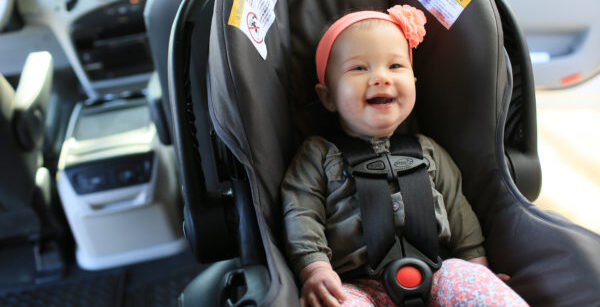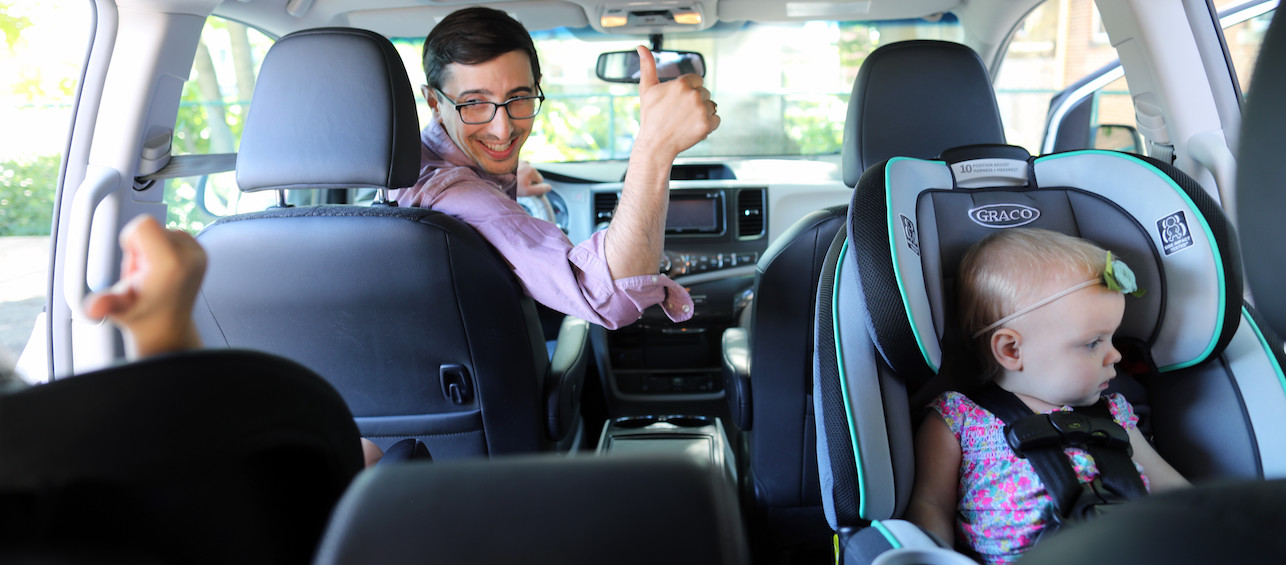The short answer to this question is, as long as possible.
Previously, the American Academy of Pediatrics (AAP) stated that children are safer riding rear-facing up to age 2. The AAP recently removed the specific age milestone. Now, the latest research shows that keeping children in a rear-facing car safety seat for as long as possible—until they reach the highest weight or height allowed by their car seat—is the best way to keep them safe.
WHY SO LONG?
Studies show that the likelihood for head and neck injuries in crashes of all directions is significantly lower if a child is riding rear-facing as compared to forward-facing. When children ride rear-facing in the car, their head, neck and spine are better supported within the upper shell of the car seat. In this position, the car seat absorbs most of the crash forces and does a better job of protecting these areas of the body.
Children who ride forward-facing are restrained by the harness straps. But in an accident, their heads can be thrown forward, which can result in serious spine and head injuries. Riding rear-facing lowers the risk of these injuries.
BUT MY CHILD’S LEGS ARE SCRUNCHED
Some parents ask me about their child’s legs being scrunched while riding rear-facing, and whether the child is more likely to sustain a leg or foot injury in a crash. I understand their concern, but it’s actually nothing to worry about. Kids are flexible and are able to cross their legs or put their feet up the back of the seat. Believe it or not, a child seated forward-facing actually has a higher likelihood of sustaining a foot or leg injury if in a crash.
I’ve also heard concerns that children look uncomfortable riding rear-facing and/or that the child would prefer to ride forward-facing. I always emphasize safety first. Rear-facing really is the most protected way to ride in a vehicle—it is up to parents to be responsible regardless of the perceived discomfort of the child or of the parent themselves.
USE THE RIGHT SEAT
Above all, make sure you are using the right car safety seat for your child. The risk of death or serious injury is lowered by more than 70 percent when you use the right car or booster seat.
The updated AAP statement is an important step in child passenger safety and it is a recommendation that we fully support here at Cincinnati Children’s. Many car seat manufacturers are now making seats with rear-facing weight limits of 40 pounds or more to help with this recommendation to keep children rear-facing longer. The direction in which your child rides is incredibly important to how protected your child will be in the unfortunate event your family is in a crash. Choose best practice to keep you and your children safe while you ride in the car.
Editor’s Note: If you have questions about child safety seats or would like to schedule an appointment for a free seat check with one of our certified child safety technicians, please call the Comprehensive Children’s Injury Center at Cincinnati Children’s at 513-636-7865.






 We are going to turn her around this week
We are going to turn her around this week
Any opinion on the move to a booster? My son is nearly 5 and about 34 pounds. Should I switch him or keep him in his 5 point harness?